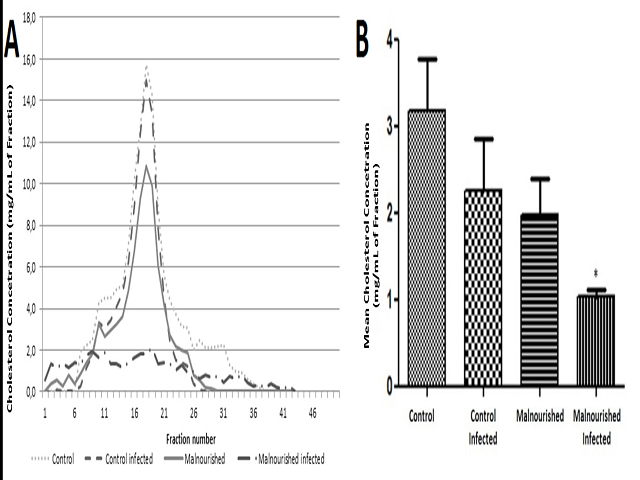Changes in oxidative stress and lipoprotein in malnourished gerbils infected with Giardia lamblia
DOI:
https://doi.org/10.5530/fra.2014.1.10Keywords:
Giardiasis, Malnutrition, Metabolism, Superoxide, catalase,Abstract
Introduction: It is speculated that giardiasis, one of the most common parasites in the world, would produce metabolic changes that worsen the nutritional status of malnourished or immunocompromised patients. In this context, we seek to contribute to clarify this issue by evaluating the effects of infection on antioxidant defense and lipoprotein metabolism in gerbils previously malnourished. Methods: 32 gerbils were used, divided into four groups: Control (CT) and Control Infected (CTIn), which each received a 20% protein diet, Malnourished (MN) and Malnourished Infected (MNIn), which each received a 5% protein diet. CTIn and MNIn groups were inoculated with 1×106 trophozoites of G. lamblia, while the remaining groups were mock infected. Seven days post-infection, all groups were sacrificed and hepatic tissue collected for assessment of oxidative stress via dosing catalase and superoxide dismutase and serum was collected to evaluate the lipoprotein metabolism by Fast Protein Liquid Chromatography. In each fraction, cholesterol concentration was determined using commercial kits, and protein by absorbance difference. Results: Gerbils fed with a low protein diet had significantly lower body weight. Cholesterol and protein in the fractions were significantly lower in group MNIn compared to CT and Catalase activity was higher in group MNIn compared to control. Conclusions: Our results demonstrated that host response against giardiasis associated to malnutrition, led to an oxidative stress that produced changes on lipoprotein composition in the malnourished animals suggesting that the infection could influence on metabolic changes, worsening the nutritional status of infected animals.
Downloads
Metrics





